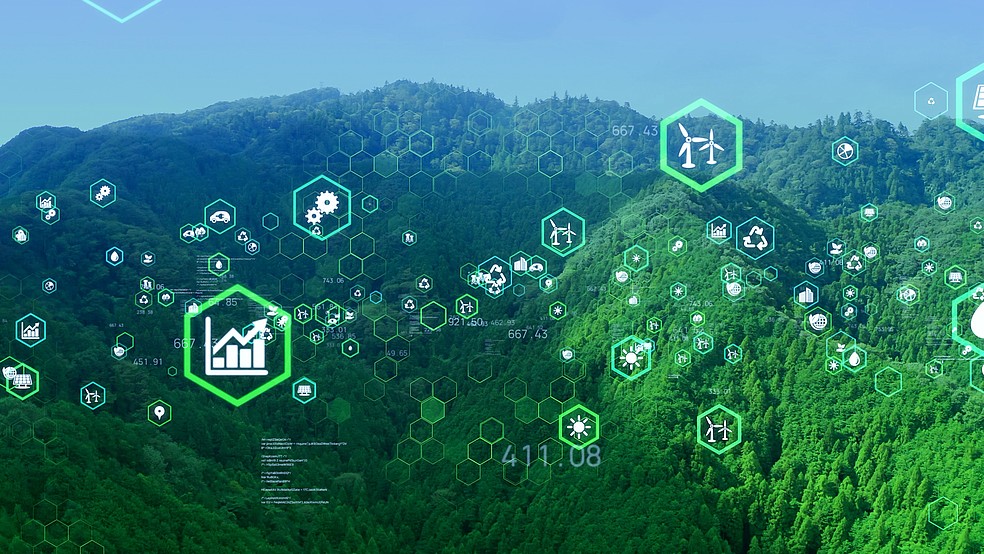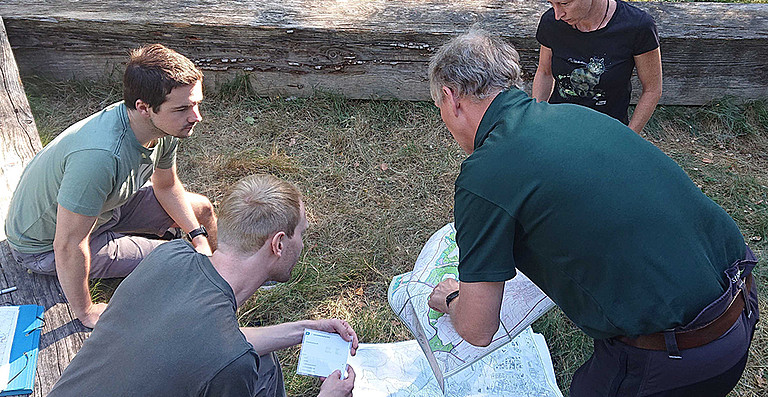Published on March 09, 2023
How forest protection will bear fruits using artificial intelligence

2022 proved to be a year of extremes: record heat waves and droughts determined the climate in large parts of Europe. The consequences of such climate extremes are increased dryness and even the risk of forest fires. The devastating forest fires in Saxony and Brandenburg in the summer of that year showed just how real this scenario is. The effects of climate change are already clearly visible in German forests today and will continue to be a factor for forest management in the future, where it will be necessary to dynamically adapt to continuously changing conditions. Researchers from the South German Climate Office at KIT and the Institute of Geography and Geoecology (IfGG) are working together with a KIT spin-off, EDI GmbH - Engineering Data Intelligence, on an application that will support forest management in the task of being able to ensure the conservation and sustainable management of German forests in the medium to long term.
A challenging project for challenging times
The joint project EDE 4.0 (short for Extended Dynamic Felling Planning), which is funded by the German Federal Ministry of Food and Agriculture (BMEL), hits a sore spot in forest management. This is because, in addition to the serious effects of climate change, the forestry industry has been increasingly struggling with challenges in its day-to-day operations for several years now. These range from growing precincts per capita to rising retirement rates to contrasting demands that stakeholders such as investors, citizens, and climate activists are placing on forests and their management. All of this is important for forest employees to consider in decision-making processes. "If district foresters are assigned additional areas, as is currently increasingly common, or if they are new to their job, they still need to be able to make decisions quickly for their district. This is where our application can help provide an overview," explains Dr. Thomas Freudenmann, CEO of EDI GmbH.
The cloud-based application, developed with the EDI hive IoT framework, supports forest management by using artificial intelligence (AI) and formalized expert knowledge to decide where to harvest or when to replant, including the likelihood of success of a planting at a defined location. In doing so, the intelligent assistance system provides forestry employees with individual, data-based risk assessments of the current situation as well as editable, alternative scenarios - if required, also directly in the field. To this end, the system draws on the expertise of the South German Climate Office, which evaluates climate forecasts from the BMBF MiKlip project for several months and years in advance, as well as on forestry knowledge from the IfGG, such as tree growth rates. The expert knowledge of forestry employees is also incorporated. Dr. Hans Schipper, head of the South German Climate Office at KIT, explains: "Our system in the project is basically modular: The advantage of this is the flexibility to add further modules at any time as needed, to change existing ones, or to increase the complexity." Finally, the algorithm processes all the information fed in. It converts the information into known performance indicators so that visually simple and intuitive decision recommendations can be made in the application for measures in the defined areas. The focus here is on transparency and clarity, as Dr. Ana Cordeiro Pires from the South German Climate Office emphasizes: "We're not talking about information such as specific temperature values or rainfall amounts, but whether it will be warmer or colder and how likely certain events are. With this information in mind, forestry workers can better decide whether they want to take a risk." In this way, those involved in the project want to ensure that users receive targeted recommendations at all times without being overwhelmed by the amount of information or the level of detail.
With the end user, for the end user
But how can the interdisciplinary team most effectively determine what types of information are needed in the logging planning application? To answer questions like these, the researchers hold regular workshops with district foresters. Through the workshops, the team receives valuable feedback on the content on the one hand, and on the other hand, the user interface and user-friendliness are also continuously discussed and improved. This close collaboration is at the heart of the project, explains Freudenmann: "Our workshops help us capture and formalize the expertise of those involved. We provide the performance indicators and the forest employees tell us what's really relevant to them." He stresses that the application can only be used operationally if there is trust and transparency in the model between development and end users. "We try to quantify the gut feeling of our experts. The best thing that can happen to us is that they would have intuitively made a similar decision and fell validated by our application. Because then, the decision is quantified and recorded in a comprehensible way."
Quo vadis, EDE 4.0?
The project, which was initiated in 2020, will run until summer 2023. The team around KIT and EDI GmbH is currently already in further discussions with the project sponsor, the Agency for Renewable Resources (FNR). Together with the associated partners, the Forest Research Institute Baden-Württemberg (FVA), the Rottenburg University of Applied Forest Sciences (HFR), the City of Karlsruhe, and the Ministry of Rural Areas and Consumer Protection Baden-Württemberg (MLR), the team hopes for a continuation and possible expansion of the project. Until the project officially ends in July, the researchers and EDI GmbH are working to further develop the prototype and make the application available to foresters on smartphones, tablets and PCs. Whether the project's efforts will ultimately bear fruit will be seen in a few years to decades.


comments about this article
No comments